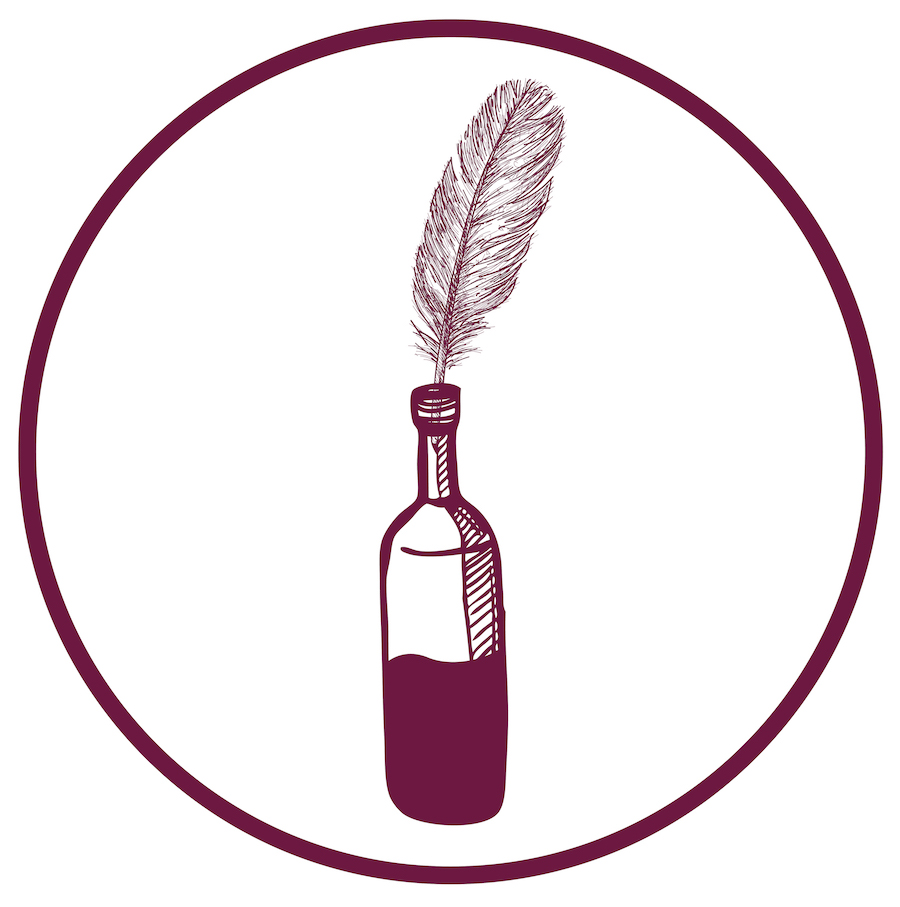Guest post by Keith Van Sickle
France’s Rhône Valley is one of the country’s largest wine regions, running 200 miles from Lyon south to nearly the Mediterranean Sea. Its northern (or septentrionaux) and southern (or méridionaux) sections are so different that each deserves its own wine guide.
Red Wines of the Northern Rhône
Here, the Syrah grape is king. It makes savory, age-worth wines with plenty of tannin—Thomas Jefferson once called them “the manliest wines of France.” The top, and priciest, appelations are Hermitage, Côte Rôtie, and Cornas.
Hermitage
The wines of Hermitage are grown on the slopes of a large hill topped with, you guessed it, an ancient stone hermitage. They are not fruit-forward, but rather tend towards earth, leather, and red berries. Because of their high level of tannin, they need time in the cellar before they are ready to drink, and can be aged for decades.
Image Source: Chapoutier Facebook page
Côte Rôtie
The wines of Côte Rôtie (“roasted slope”) are grown on steep hillsides, making manual harvesting a must. Like Hermitage, they are Syrah-based but can include up to 20% of Viognier, a fragrant white grape. The wine’s distinctive nose includes notes of green olive, pepper, and bacon, and Côte Rôties need years to mature.
Cornas
Cornas (“burnt earth), is the smallest of the three appellations and its wines are similar to those of Hermitage but are generally considered less refined (and also less expensive.)
Good Value Wines
For those of us looking for more affordable and more fruit-forward wines made from Syrah, the appellations of Saint-Joseph and Crozes-Hermitage both offer excellent wines and good value.
White Wines of the Northern Rhône
While most wines in the northern Rhône are red, there are also a number of notable whites.
Condrieu
This appellation is the historic home to the Viognier grape. Condrieu wines often surprise first-time drinkers because their nose is so floral that you expect a sweet wine, but what’s in the glass is bone dry, with refreshing acidity. The Viognier grape lost popularity in the early part of the 20th century and almost disappeared, but dedicated winemakers kept it going and today it is grown all over the world.
Roussane and Marsanne
Two other standout grapes grown in the northern Rhône are Roussane and Marsanne. They are the secret behind white Hermitage, one of France’s most age-worthy wines. White Hermitage is famous for being delicious young, then going “dumb” for a decade before emerging again, like a butterfly, as a ravishing beauty.
Top Winemakers
Guigal
One of the largest and most diversified winemakers of the Rhône Valley, Guigal is perhaps best-known for its single-vineyard Côte Rôties that collect 100-point scores and cost a small fortune. But excellent Guigal wines are available at all price points, including an always reliable and modestly priced Côte du Rhône. You can taste their wines at their Caveau du Château in the town of Ampuis, next to the stunning vineyards of Côte Rôtie.
Image source: Chapoutier Facebook page
Chapoutier
Chapoutier is another large domain with vineyards up and down the Rhône Valley. The family has been making wine for over a century and, like Guigal, offers a whole range of quality and price. Under the leadership of their current head, Michel Chapoutier, the wines improved dramatically in quality in the 1980s and today are some of the region’s best. All Chapoutier wines are biodynamic and unfiltered, and curiously, all of their labels include braille. You can taste the Chapoutier wines at their tasting room in Tain-l’Hermitage, just across the Rhône River from the famous Hermitage hill.
Chave
The Chave family has been making wine in the Rhône Valley since 1481. Think about that—more than five centuries of one family handing down knowledge and tradition from generation to generation! It is no wonder that their wines are considered among the best in France, with both red and white Hermitages commanding extraordinary prices. Sorry, they don’t have a tasting room, but we can dream, can’t we?
Don’t Miss
Image source: Valrhona FaceBook page
Valrhona is one of the world’s best chocolate makers, and its products are used by top pastry chefs the world over. You can visit their City of Chocolate in Tain-l’Hermitage to take a behind-the-scenes tour of the world of fine chocolate. Or you might want to enjoy their “very chocolately” café and their well-stocked gift shop. You can combine a visit here with a visit to Chapoutier’s tasting room, just a short walk away!
Dining Tips
Lyon is considered the capital of French gastronomy, and no visit to the city is complete without a meal at one of their famed bouchons. These were originally restaurants for the working class, serving hearty fare at reasonable prices. Today they are the place to go for traditional fare like quenelles (fish dumplings) and pot-au-feu, perfect matches for a sturdy local wine. The Michelin guide lists some of the city’s best bouchons here.
Wine Scribes take: When in Lyon, you must visit Antic Wine: A small hole-in-the-wall wine store with one of the best selections, a legendary underground cellar and a lovely, eccentric owner. You may even get lucky with a few pours of whatever the staff is enjoying at that moment.
Image source: Bouchon Sully Facebook website
Fun Fact
In Lyon’s restaurants you will often see wine served not in a carafe, but in a small bottle with a thick glass bottom called a pot lyonnais that holds 46cl of wine. Why the odd quantity? It seems that back in the old days, workers in Lyon had the right to a half-liter of wine as part of their daily pay. But scheming bosses cheated them out of part of their share, creating this almost-big-enough bottle to serve the workers’ wine, keeping the rest for themselves.
About the Author
Keith Van Sickle splits his time between Provence and California. He is the author of the best-selling An Insider’s Guide to Provence. Read more at Life in Provence.




